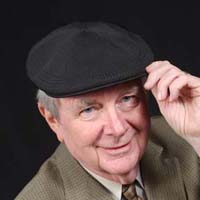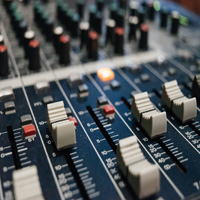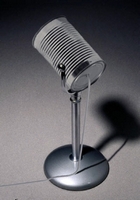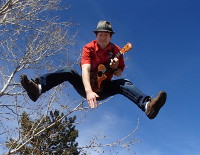 |
VO-BB - 20 YEARS OLD!
Established November 10, 2004
|
| View previous topic :: View next topic |
| Author |
Message |
Kristin Lennox
Flight Attendant

Joined: 30 Apr 2011
Posts: 858
|
 Posted: Wed Jul 31, 2013 6:22 am Post subject: Posted: Wed Jul 31, 2013 6:22 am Post subject: |
 |
|
| Rob Ellis wrote: |
Kristin you will NEVER become a gear geek with that kind of attitude |
I know.
I am ashamed.
 GIFSoup GIFSoup
_________________
Always look on the bright side of life.
Dee doo. Dee doot doot doo dee doo.
my website |
|
| Back to top |
|
 |
Benjamin Stovall
Been Here Awhile

Joined: 13 Dec 2011
Posts: 250
Location: Los Angeles, CA
|
 Posted: Wed Jul 31, 2013 10:04 am Post subject: Posted: Wed Jul 31, 2013 10:04 am Post subject: |
 |
|
I know that it's a simple truth to say, ďIf it sounds good, it is good.Ē
But, what about when it sounds good, but it isnít good? Has that ever happened?
Well, yes. It has. To me. Let me explain:
While happily churning out VO material for varied sources in the past, there was a point at which, before I got my Whisper Room, I landed a gig for a large corporation. I didnít have ISDN which is what they wanted, so I set up a Skype phone patch which was settled for. All went well, and I prepared the files to be sent.
I was shocked to soon after learn that my files were considered noisy by their standards. I listened to them closely as I always did, with good studio headphones and it sounded good Ė to me. What I didnít realize back then, was that they were mixing this together for a spot that had very quiet moments, and others with loud music and effects. So, what they did was compress the heck out of it, to cut through the mix, which in the quiet spots revealed the true nature of my recording space.
I didnít give a rats hinder parts about knowing my noise floor level until that moment. Itís also why I continue my quest to get my environment as quiet as possible. Sometimes that means actually measuring things with equipment not just my ears.
There are a lot of people that record with a ďquiet computerĒ in the same room and that works just fine for them for what the audio will be used for. But, if for whatever reason a lot of compression, etc. is ever aggressively applied to it, guess what will be heard?
As George rightly pointed out, even a noisy room can measure well, though, so really, I find itís been helpful to eliminate noise at every level: equipment, external, plugins, etc., not just rely solely on what the numbers may say. However, not knowing where I was at has caused me some embarrassment in the past that wonít be repeated.
_________________
Ben Stovall Voiceover
http://www.benstovall.com
"When you're nearing the end of your rope, tie a knot. Keep on hanging. Keep on remembering, that there ain't nobody bad like you." -- The Electrifying Mojo
Last edited by Benjamin Stovall on Wed Jul 31, 2013 1:06 pm; edited 1 time in total |
|
| Back to top |
|
 |
Scolaidhe
Guest
|
 Posted: Wed Jul 31, 2013 10:15 am Post subject: Posted: Wed Jul 31, 2013 10:15 am Post subject: |
 |
|
| This is why I don't record to my computer. My computer is in my space, but always off. I use a TASCAM SS-R100, recording to a CF card. Not only does it eliminate the possibility of computer noise, it also makes the space "feel" quieter. |
|
| Back to top |
|
 |
vkuehn
DC

Joined: 24 Apr 2013
Posts: 688
Location: Vernon now calls Wisconsin home
|
 Posted: Wed Jul 31, 2013 11:47 am Post subject: Posted: Wed Jul 31, 2013 11:47 am Post subject: |
 |
|
| Scolaidhe wrote: |
This is why I don't record to my computer. My computer is in my space, but always off. I use a TASCAM SS-R100, recording to a CF card. Not only does it eliminate the possibility of computer noise, it also makes the space "feel" quieter.
|
That is a good solution for "short form" recordings. I have been doing something similar as I do my experimenting and testing. I have a very quiet NetBook sized computer that is extremely quiet... and I can also set it and the analog-to-digital converter outside the door of my studio and shut the big bad-boy down.
But in long-form recordings (audio for training videos, book narrations, etc) you may record for anywhere from 30 minutes to three hours at a time. Then you compare the recording to the script a realize there are some corrections to make. You need to hear the original, then record the replacement in a way that when you splice it in, all the material has a similar sound.
I have a hard time visualizing that process using a TASCAM or similar product. I will eventually build an enclosure around my computer, or if I find the right machine on close-out pricing, acquire a simple computer that will live outside of my studio somewhere and only be used for audio recording and editing. |
|
| Back to top |
|
 |
Ed Fisher
DC

Joined: 05 Sep 2012
Posts: 605
Location: East Coast, U.S.A.
|
 Posted: Wed Jul 31, 2013 1:57 pm Post subject: Posted: Wed Jul 31, 2013 1:57 pm Post subject: |
 |
|
[quote="vkuehn"] | Scolaidhe wrote: |
I have a hard time visualizing that process using a TASCAM or similar product. I will eventually build an enclosure around my computer, or if I find the right machine on close-out pricing, acquire a simple computer that will live outside of my studio somewhere and only be used for audio recording and editing. |
The procedure for using a solid state device like the Tascam would be simply to record to it, then afterwards access it directly through the computer as you would have it connected to the computer via USB connection. It simply looks to the computer like an external hard drive. You can edit from the card or (more likely) drag it to your main work drive.
A lot of folks are going to things like the Macbook or something in the "Book" format. They have the advantage of being small enough that you can take them into the booth with you, a screen that can be used for reading the script, and solid state data storage. That means no moving parts. No fan No noise. |
|
| Back to top |
|
 |
Monk
King's Row

Joined: 16 Dec 2008
Posts: 1153
Location: Nestled in the Taconic Hills
|
 Posted: Wed Jul 31, 2013 3:45 pm Post subject: Posted: Wed Jul 31, 2013 3:45 pm Post subject: |
 |
|
Ok, just to join the fray.
My RadioShack Db meter, C weighted scale and A weighted scale had no reading at 60 db.
so I used an iPhone a , and that said that my peak sound was 40Db with an average of 35Db. , and that said that my peak sound was 40Db with an average of 35Db.
Thats with all the gear running, from the microphone position.
Good? bad?
_________________
Company, villainous company, hath been the spoil of me...
www.monksvoice.com |
|
| Back to top |
|
 |
Pam
The Thirteenth Floor

Joined: 21 Jul 2006
Posts: 1311
Location: Chicago, Il
|
 Posted: Wed Jul 31, 2013 5:06 pm Post subject: Posted: Wed Jul 31, 2013 5:06 pm Post subject: |
 |
|
Ok I'll play because this is something that has been driving me nuts recently. Please be kind as I'm not a techie at all. My signal chain is mic-dbx286-mboxpro-macmini. I seem to have developed a noise floor problem that I don't know what to do with. Lots of crap below -120 that I can roll off but there is also garbage throughout the file. So I tried the same script without the dbx and while it's much lower in volume, it looks WAY cleaner. Could it be that my dbx has gone bad? Do I even need a dbx? I tried to post the images and the audio files on here but apparently this is above my pay grade. If someone can help me understand how to do that, maybe this conversation can get off the ground! Some days I get so tired of learning how to do EVERYTHING!
Any help in understanding this would really be appreciated.
_________________
Pam Tierney
www.pamtierneyvo.com
imdb profile http://imdb.com/name/nm1941932/
Now what did I come in here for? |
|
| Back to top |
|
 |
Ed Fisher
DC

Joined: 05 Sep 2012
Posts: 605
Location: East Coast, U.S.A.
|
 Posted: Wed Jul 31, 2013 5:41 pm Post subject: Posted: Wed Jul 31, 2013 5:41 pm Post subject: |
 |
|
| Pam wrote: | | I seem to have developed a noise floor problem that I don't know what to do with. Lots of crap below -120 that I can roll off but there is also garbage throughout the file. So I tried the same script without the dbx and while it's much lower in volume, it looks WAY cleaner. Could it be that my dbx has gone bad? Do I even need a dbx? |
Perhaps if you told us the settings you have on the DBX 286, it might be useful to understanding what's happening. Compression is going to increase your noise floor. (at least the kind of compression I grew up with) But, on the other hand, judicious use of the expander/gate should push you noise floor down. Perhaps the "garbage thoughout the file" is your "threshold" setting being too close to the real noise floor?
Just a thought. A wild and reckless shot in the dark. |
|
| Back to top |
|
 |
vkuehn
DC

Joined: 24 Apr 2013
Posts: 688
Location: Vernon now calls Wisconsin home
|
 Posted: Wed Jul 31, 2013 5:42 pm Post subject: Posted: Wed Jul 31, 2013 5:42 pm Post subject: |
 |
|
| Monk wrote: | Ok, just to join the fray.
My RadioShack Db meter, C weighted scale and A weighted scale had no reading at 60 db.
so I used an iPhone a , and that said that my peak sound was 40Db with an average of 35Db. , and that said that my peak sound was 40Db with an average of 35Db.
|
The key seems to be the difference between "program content" and "noise content". So you are saying your noise in the room measures 35 dB. Now talk to your meter and tell us how loud (according to your meter) YOU are. If your voice is at least 50 dB louder than the standing noise, you are "in the game". If your voice is 60 dB or more louder than the standing noise, sounds like you are GOLDEN! But if your voice signal is only 35 to 40 dB louder than the measured noise level, .... welcome to the crapper!  |
|
| Back to top |
|
 |
Scolaidhe
Guest
|
 Posted: Wed Jul 31, 2013 6:08 pm Post subject: Posted: Wed Jul 31, 2013 6:08 pm Post subject: |
 |
|
After all that work, I certainly hope that your noise floor is low. |
|
| Back to top |
|
 |
Ed Fisher
DC

Joined: 05 Sep 2012
Posts: 605
Location: East Coast, U.S.A.
|
 Posted: Wed Jul 31, 2013 6:25 pm Post subject: Posted: Wed Jul 31, 2013 6:25 pm Post subject: |
 |
|
If someone wants to know their noise floor, why not use the very thing by which others will judge you.
Your sound file.
Almost every audio editing program that I know of has a built in VU meter. Record yourself with some pregnant pauses in-between your words. Then you can see what your noise floor is...comparable to your peak levels. Ideally you should be recording as HOT as possible without peaking to get the most out of all of those little 0s and 1s. |
|
| Back to top |
|
 |
Bob Stevens
Contributore Level V

Joined: 27 Dec 2012
Posts: 151
Location: Orange County, California
|
 Posted: Wed Jul 31, 2013 6:45 pm Post subject: Posted: Wed Jul 31, 2013 6:45 pm Post subject: |
 |
|
Hey Pam,
I cannot speak about your 286. I have never used one.
What I would do is post a new topic in Gear about your issue. I think a clean topic will attract some 286 users that may have already abandoned this floor thing.
Bob
_________________
"Dialog is the painting on a canvas of silence" |
|
| Back to top |
|
 |
Pam
The Thirteenth Floor

Joined: 21 Jul 2006
Posts: 1311
Location: Chicago, Il
|
 Posted: Thu Aug 01, 2013 9:19 am Post subject: Posted: Thu Aug 01, 2013 9:19 am Post subject: |
 |
|
Great idea Bob. I think I will. But to round out my issue here, I have everything turned off and the process bypassed but there is still a problem. I have the gain at +32 and the output at +4. I think I'm taking this thing offline and just turning the gain up on my mbox.
_________________
Pam Tierney
www.pamtierneyvo.com
imdb profile http://imdb.com/name/nm1941932/
Now what did I come in here for? |
|
| Back to top |
|
 |
Jason Huggins
The Gates of Troy

Joined: 12 Aug 2011
Posts: 1846
Location: In the souls of a million jeans
|
 Posted: Thu Aug 01, 2013 9:36 am Post subject: Posted: Thu Aug 01, 2013 9:36 am Post subject: |
 |
|
There may be an issue. My 286a is always set around 30ish, all processing bypassed (which bypasses the output gain stage as well) and the hi pass on. I get almost identical noise with or without the 286a. If there is significant noise, that doesn't seem normal. In the other thread (providing you start one) post a with and without audio file for fun  |
|
| Back to top |
|
 |
Benjamin Stovall
Been Here Awhile

Joined: 13 Dec 2011
Posts: 250
Location: Los Angeles, CA
|
 Posted: Thu Aug 01, 2013 5:25 pm Post subject: Posted: Thu Aug 01, 2013 5:25 pm Post subject: |
 |
|
Pam wrote:
| Quote: | | Do I even need a dbx? |
That right there, is an excellent question and it needs answering.
You're using a channel strip. This gives you the ability to add compression, expansion, de-essing etc. That can be nice, but it is my best practice not to add any effects to what I'm tracking. Most DAWs (Digital Audio Workstation's such as Audition/ProTools) will have software plugins that can be used to do any of those things after recording. I use this method because using hardware will "bake in" your decisions, which cannot be undone if you don't like what you get. Eliminating one more potential source of noise may be another reason not to use one.
That said, since the DBX has a pre-amp, which preamp are you using, the DBX or the Mbox? You want to be sure you are not using both (gain staging) which can introduce noise. There are directions for bypassing Mbox3pro's preamps in your manual, I believe on page 8.
But, why do that at all? If you don't use the processing function of the DBX, and by the question, I'm guessing you might not be, why not just record with the Mbox directly? Especially since you've seen that the DBX adds noise?
EDIT: I should clarify that I do sometimes use my 416 with an Avalon channel strip (I started the thread asking about others noise floor compared to this pairing), but specifically when I want the distinct sound that the tubes in that give me and I bypass all effects. If you don't have a particular reason to use the DBX, I'd suggest trying recording without it and seeing what you think about the sound.)
_________________
Ben Stovall Voiceover
http://www.benstovall.com
"When you're nearing the end of your rope, tie a knot. Keep on hanging. Keep on remembering, that there ain't nobody bad like you." -- The Electrifying Mojo
Last edited by Benjamin Stovall on Thu Aug 01, 2013 7:58 pm; edited 1 time in total |
|
| Back to top |
|
 |
|
|
You cannot post new topics in this forum
You cannot reply to topics in this forum
You cannot edit your posts in this forum
You cannot delete your posts in this forum
You cannot vote in polls in this forum
|
Powered by phpBB © 2001, 2005 phpBB Group
|




 , and that said that my peak sound was 40Db with an average of 35Db.
, and that said that my peak sound was 40Db with an average of 35Db.

